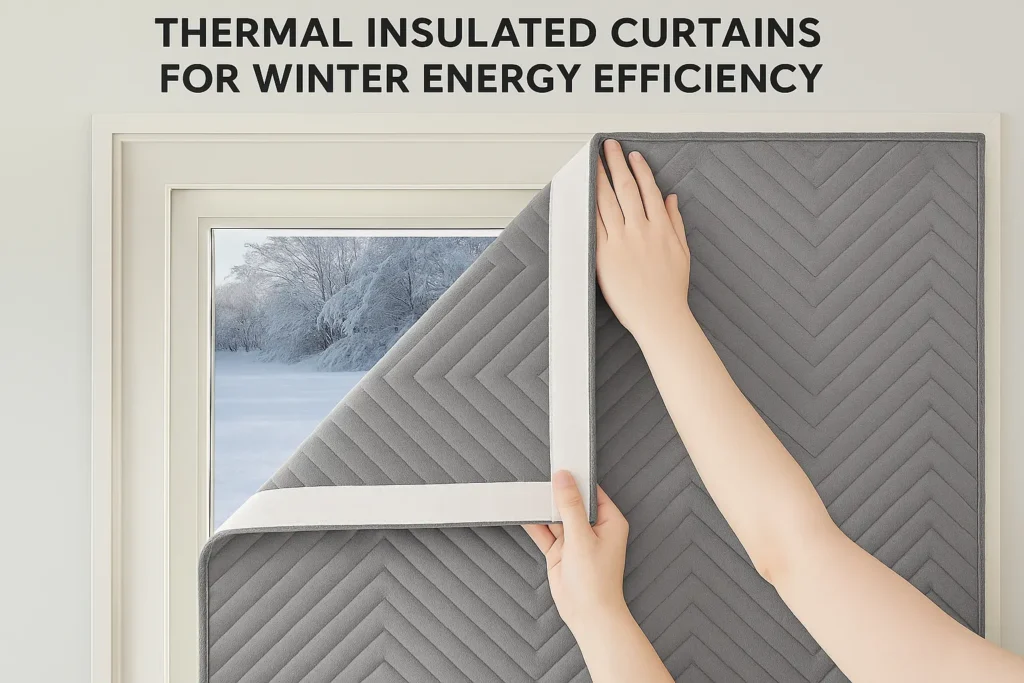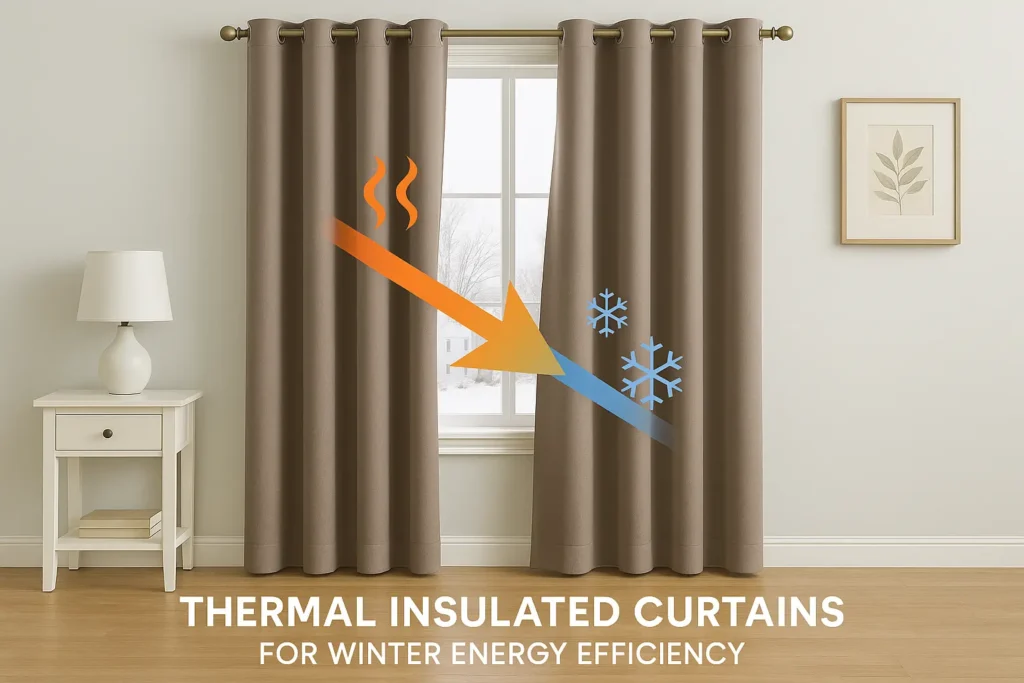When the winter chill starts creeping through the windows, your heating bill often takes a hit. But what if a simple home upgrade could keep your house warmer and lower your energy costs? Enter thermal insulated curtains — an effective and affordable way to boost your home’s energy efficiency.
In this guide, we’ll walk you through everything you need to know: what they are, how they work, their pros and cons, popular models, technical specs, and answers to common questions. Let’s keep the warmth in and the energy bills down.
What Are Thermal Insulated Curtains?
Thermal insulated curtains, also known as energy-saving or thermal blackout curtains, are specially designed window treatments that reduce heat transfer through your windows. Unlike standard curtains, they’re made with multiple layers — often including a thermal lining — to provide insulation against the cold in winter and the heat in summer.
These curtains can be made from heavyweight fabrics like polyester or velvet, and may include foam, acrylic, or aluminum linings that reflect heat.
How Do Thermal Curtains Work?
Thermal curtains work on the principle of thermal insulation and air barrier creation. They trap a layer of air between the curtain and the window, acting like a buffer zone that prevents heat loss. Some models have a reflective backing that pushes radiant heat back into the room.
Here’s how they help in winter:
-
Reduce convective heat loss through windows.
-
Block drafts by sealing gaps.
-
Reflect infrared heat back into the room using a thermal lining.
Studies show that thermal curtains can reduce heat loss by up to 25-30%, making them a smart addition to any energy-conscious home.

Pros and Cons of Thermal Insulated Curtains
👍 Benefits:
-
Energy savings: Lower heating bills by maintaining room temperature.
-
Improved comfort: Keeps cold drafts out and warm air in.
-
Noise reduction: The heavy fabrics also dampen sound.
-
UV protection: Some block out sunlight that can fade furniture.
-
All-season use: Helps in both winter and summer.
-
Style + function: Available in various colors, textures, and patterns.
👎 Drawbacks:
-
Can be bulky: Heavier than regular curtains.
-
Installation matters: Improper hanging reduces effectiveness.
-
Limited daylight: May block natural light if not opened.
-
Higher upfront cost: Premium models are pricier than basic drapes.
Popular Thermal Curtain Models in the Market (2025)
| Model | Key Features | Price Range (AUD) | Best For |
|---|---|---|---|
| NICETOWN Thermal Insulated Grommet Curtains | Triple weave fabric, noise-reducing, blackout | $50–$80 | Bedrooms, living rooms |
| Deconovo Thermal Curtains | Energy-saving, lightweight, comes in various sizes | $30–$60 | Apartments |
| H.VERSAILTEX Blackout Curtains | Thick microfiber, elegant look, thermal lining | $60–$90 | Larger windows |
| RYB HOME Thermal Curtains | Easy-care polyester, noise and light blocking | $40–$70 | Home offices |
| Miuco Thermal Curtains | Advanced blackout lining, eco-friendly materials | $70–$100 | Eco-conscious homes |
You can find these on Amazon Australia, Bunnings, or Spotlight.
Technical Features to Consider
When shopping for thermal insulated curtains, keep an eye out for these specs:
| Feature | What It Means |
|---|---|
| R-Value | A measure of thermal resistance — higher R-value = better insulation. Curtains typically range from R-1 to R-6. |
| Blackout rating | 85–100% light blocking improves energy efficiency. |
| Triple weave fabric | Three layers of woven fabric that enhance thermal retention. |
| Foam or acrylic backing | Adds an insulation layer and blocks sound. |
| Reflective backing | Reflects heat into the room, great for cold climates. |
| Material | Polyester, microfiber, or velvet — denser = more efficient. |
Installation Tips for Maximum Efficiency
Even the best curtains won’t work well if they’re not installed correctly. Follow these tips to maximize performance:
-
Mount the curtain rod above and beyond the window frame (at least 10–15 cm on each side).
-
Ensure curtains touch the floor to block drafts.
-
Use magnetic or Velcro strips to seal edges and minimize airflow.
-
Close them before sunset to trap indoor heat.
-
Pair with pelmets or valances to reduce heat escape from the top.
Bonus tip: Combine with window insulation film for even better results in older homes.
Thermal Insulated Curtain FAQs
Yes, especially in colder climates. They reduce the need for heating by minimizing heat loss, potentially saving 10–25% on your winter energy bill.
Absolutely. Thermal curtains can reflect heat away from your home in summer, keeping rooms cooler.
Not always. While many thermal curtains are also blackout, blackout curtains don’t always offer thermal insulation.
Most are machine washable, but always check the label — some have linings that require dry cleaning.
Yes! Look for extra-wide panels or consider custom sizing for best coverage.
Final Thoughts: Are Thermal Curtains Worth It?
If you’re looking for a simple, cost-effective way to improve your home’s winter energy efficiency, thermal insulated curtains are a smart buy. They’re easy to install, come in stylish designs, and provide immediate results — especially when used in conjunction with proper sealing and insulation.

